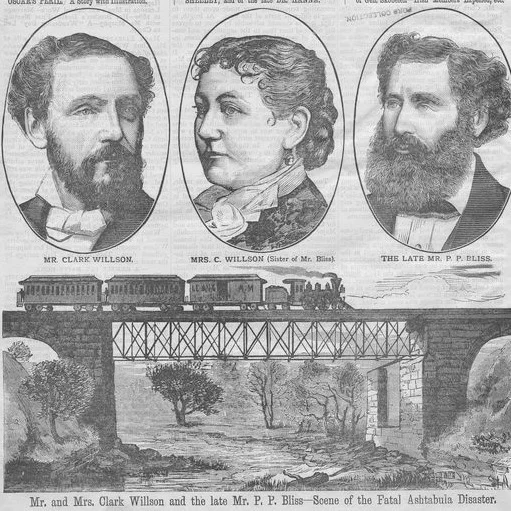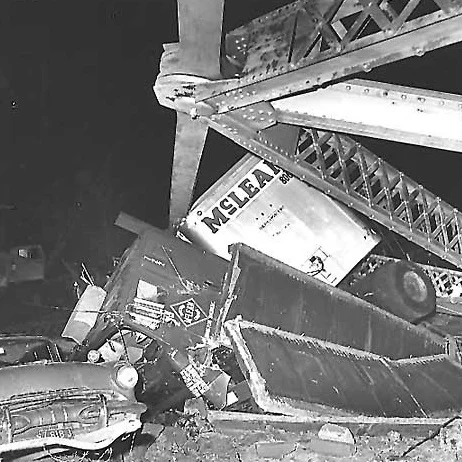The Ashtabula Horror
December 29, 1876 - The worst train accident in U.S. history (up until that point) happened on this night in Ohio.
92 of 159 passengers would die when a wrought-iron bridge collapsed and the Pacific Express fell 70 feet into the frozen Ashtabula River.
Here's an account from the Ashtabula County archives:
...the time of day about half past seven o'clock in the evening. At that moment the Pacific Express, No. 5, bound westward over the Lake Shore & Michigan Southern Railway, broke through the iron bridge that spanned the Ashtabula river on the line of the road, and suddenly plunged with a precious cargo of human life into a chasm seventy feet deep. The night was a wild and bitter one. A furious snow-storm had raged all the previous day, and had heaped great masses of snow along and across the track. The wind was a cold, biting one, and was blowing with a velocity of about forty miles per hour. The darkness was dense. On such a night as this the train, composed of eleven coaches, and drawn by two heavy engines, approached the fated bridge, located about one thousand feet east of the Ashtabula station. It was more than two hours behind the time for its arrival. On board there were not less than one hundred and fifty six human souls. There were two express cars, two baggage cars, three passenger coaches, one of them the smoking car, one drawing room coach, and three sleeping coaches. The bridge was an iron structure, and carried a double track. It consisted of two trusses of the Howe truss type, and the length of the span between abutments was one hundred and fifty feet. The train approached the bridge on the south track. At the moment of the crash, one engine, by a sudden plunge forward, had gained the west abutment, while the other engine, two express cars, and part of the baggage car rested with their weight upon the bridge. The remainder of the train was drawn into the gulf. Of the persons on board, at least eighty perished in the wreck; at least sixty three were wounded more or less, but escaped from death; five died after their rescue.
All the blame for the disaster centered on the "experimental" nature of the bridge's design. It's believed that both of the designers of the bridge committed suicide, though one of the deaths may have been a homicide.
In the aftermath, new standards for bridge design were codified.





